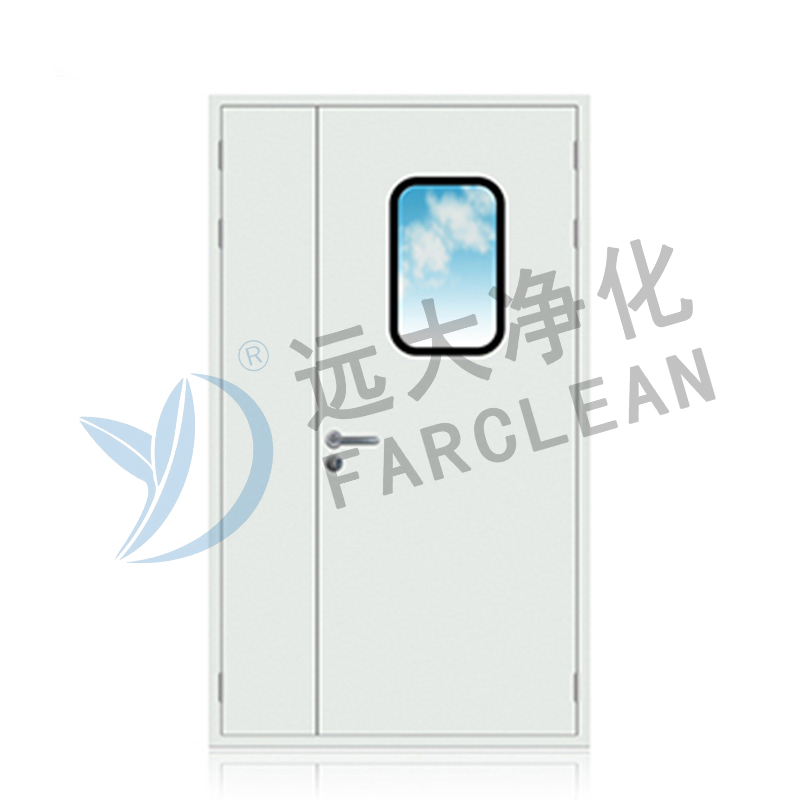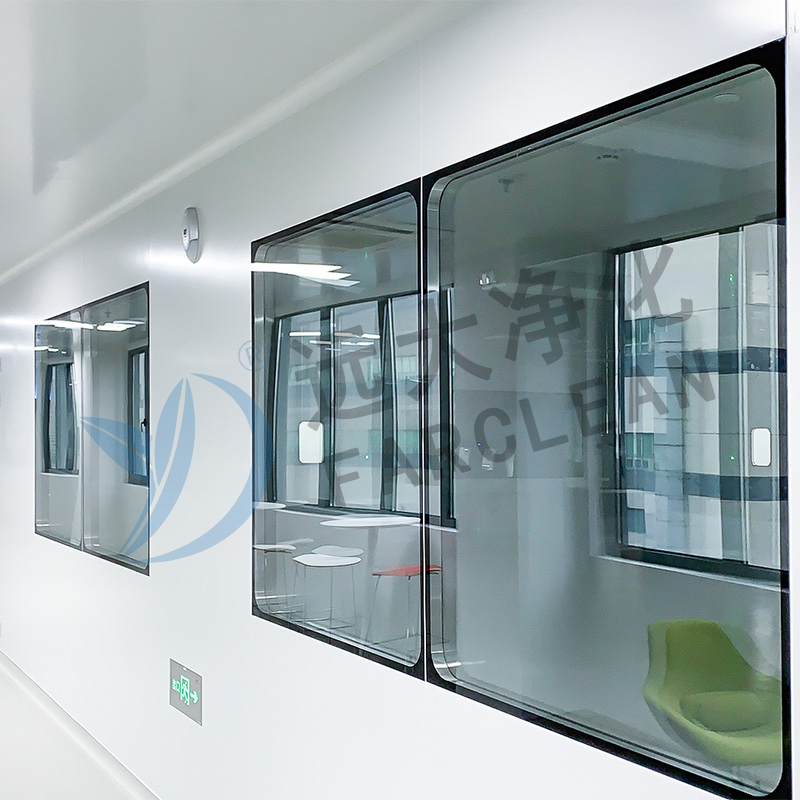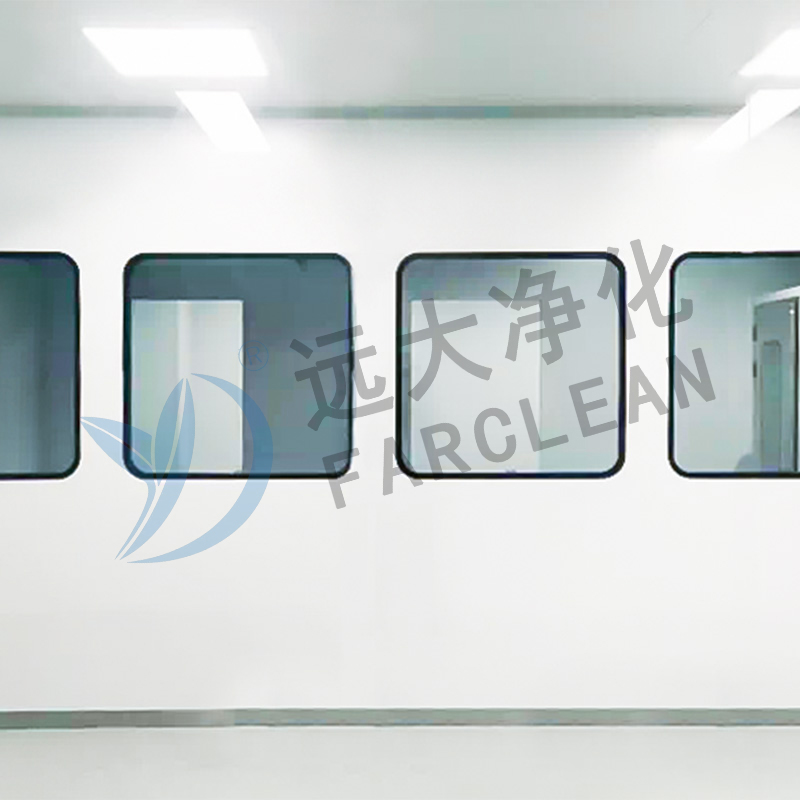Submit feedback
Founded in 2002, Suzhou Yuanda Purification is a professional manufacturer of purification doors, windows, and Sandwich panels. As an important role as factory in China, we also provides clean room equipment and supporting products such as air shower rooms, transfer windows, fast-rolling shutter doors, fire doors, FFUs, and clean sheds. The products produced are widely used in industries such as electronics and appliances, biomedicine, food, cosmetics, new energy, and school scientific research.
After more than 20 years of development, to better serve its customers, the company has also established Suzhou PURIFY Purification Technology Co., Ltd. to customize solutions for dust-free workshop purification projects for various industries. It has a one-stop service system from comprehensive enterprise plant planning, design, construction, product production and supply to help customers create high-quality clean rooms and bring them a high-quality cleaning experience. The company has always adhered to the corporate spirit of "pragmatic, hard work, and responsibility", and created a good business environment with integrity, win-win, and innovative business concepts. With a new management model, refined technology, thoughtful service and high quality, we have always adhered to the principle of giving priority to customer satisfaction and serving them with care.
-
In the world of controlled environments, cleanrooms stand as vital hubs where precision meets purity. These spaces host delicate processes that demand...
READ MORE -
PCGI sandwich panels have rapidly gained popularity in modern construction due to their durability, energy efficiency, and overall versatility. As bui...
READ MORE -
Energy efficiency continues to influence how buildings are planned, constructed, and operated. Across the construction sector, attention is shifting t...
READ MORE -
Energy consumption is one of the largest operational expenses in clean room facilities. Implementing energy-efficient clean room solutions is critical...
READ MORE
What factors should be considered when designing clean room windows?
When designing cleanroom windows, several factors must be taken into account to ensure they meet the specific requirements and standards of a cleanroom:
Corrosion Resistance and Anti-Static Properties: The window materials should exhibit excellent corrosion resistance and anti-static properties. Typically, stainless steel, aluminum alloy, or specially treated glass are chosen.
Transparency and Light Transmission: The materials’ transparency and light transmission should be considered to ensure sufficient visibility and light for the operators.
Airtightness: The windows should have excellent airtightness to prevent external contaminants from entering the cleanroom.
Sealing Materials: High-quality sealing strips and sealants should be used to ensure a tight seal between the window and the frame, preventing any gaps.
Fixed Windows: Cleanroom windows are generally fixed to ensure airtightness and dust prevention.
Opening Windows: If openable windows are needed, sliding or tilting mechanisms should be used to avoid compromising the cleanliness of the cleanroom.
Dimensions and Layout: The size and shape of the windows should be determined based on the dimensions, layout, and functional requirements of the cleanroom.
Flush with Walls: Windows should ideally be flush with the interior walls to minimize dust accumulation points and facilitate cleaning.
Insulation and Noise Reduction: Using double or multi-layer glass structures can enhance the insulation, heat preservation, and soundproofing of the windows.
Vacuum-Sealed Double Windows: Double windows with a vacuum between the panes are preferable for high cleanliness requirements, as they align with the wall surface and have no dust accumulation points.
Impact on Indoor Environment: The installation location should consider the impact on the indoor environment to avoid negative effects on cleanroom cleanliness.
Placement: Windows are typically installed in the middle section of the clean area walls to minimize adverse effects on ventilation.
Ergonomic Requirements: The installation height should meet ergonomic requirements to ensure convenient and comfortable operation for personnel.
Distance from the Floor: The distance between the window and the floor should be at least 50cm to prevent dust and contaminants from entering.
Ease of Cleaning: The design should consider the ease of cleaning and maintenance, such as components that are easy to remove and install, and materials that are easy to clean.
Regular Maintenance: Windows should be cleaned and maintained regularly to ensure they remain clean and in good condition over the long term.
Fire Safety Requirements: If the cleanroom requires fire safety measures, windows should be made from materials and designed with structures that have fire-resistant properties.
Explosion Safety: Depending on the specific needs of the cleanroom, such as explosion-proofing, windows should be made from materials and designed with structures that offer explosion resistance.
Environmental Conditions: The windows should be able to withstand various environmental conditions, such as high temperatures, low temperatures, and UV exposure.
Chemical Resistance: The windows should be resistant to corrosion when exposed to chemicals or cleaning agents to prevent damage.
When designing cleanroom windows, it is crucial to consider multiple factors, including material and performance, design and construction, installation and maintenance, safety features, and environmental adaptability, to ensure they meet the specific requirements and standards of a cleanroom.
What are the advantages of double-glazed cleanroom windows over single-glazed cleanroom windows?
Double-pane cleanroom windows offer several distinct advantages over single-pane cleanroom windows, including:
Insulation and Thermal Performance
Insulation and Heat Resistance: Double-pane cleanroom windows feature a hollow design filled with dry air or inert gas, which effectively reduces heat transfer. This makes double-pane windows highly efficient in terms of insulation and thermal resistance, reducing heat loss by approximately 70%. This significantly decreases the load on cooling (or heating) systems.
Soundproofing
Noise Reduction: The sealed space inside double-pane cleanroom windows is filled with dry gas, which has a very low sound conduction coefficient, creating a sound barrier. This can significantly reduce noise levels, typically lowering noise by 30–45 decibels, thus providing a quieter work environment.
Dust Prevention and Ease of Cleaning
Dust and Particle Prevention: The design of double-pane cleanroom windows effectively prevents the intrusion of dust, bacteria, and other particles, maintaining the cleanliness of the indoor space. Additionally, their structure facilitates easy cleaning and maintenance, with the design of filters and windows making cleaning simpler and more convenient.
Airtightness and Water Resistance
Airtightness and Watertightness: Double-pane cleanroom windows usually use high-strength, high-sealing composite adhesives to bond two pieces of glass with sealing strips. This provides excellent airtightness and watertightness, keeping rainwater completely outside and ensuring the interior of the window remains a dry air layer, free from moisture and dust.
Energy Efficiency
Energy Saving: Double-pane cleanroom windows are highly energy-efficient. Their excellent insulation and thermal performance reduce indoor energy consumption, thus saving energy. As the window area increases, the energy-saving benefits of double-pane cleanroom windows become even more pronounced.
Aesthetics and Integration
Aesthetic and Integration: Double-pane cleanroom windows can be integrated with mechanism boards or handmade clean boards, creating a seamless and aesthetically pleasing cleanroom wall and window integration. This design not only enhances the overall aesthetics of the cleanroom but also improves its functionality.
Double-pane cleanroom windows have significant advantages over single-pane cleanroom windows in terms of insulation, soundproofing, dust prevention, airtightness, water resistance, energy efficiency, and aesthetic integration. Therefore, they are the ideal choice for environments requiring high levels of cleanliness, such as dust-free workshops, laboratories, and pharmaceutical plants.

 English
English русский
русский Español
Español

















